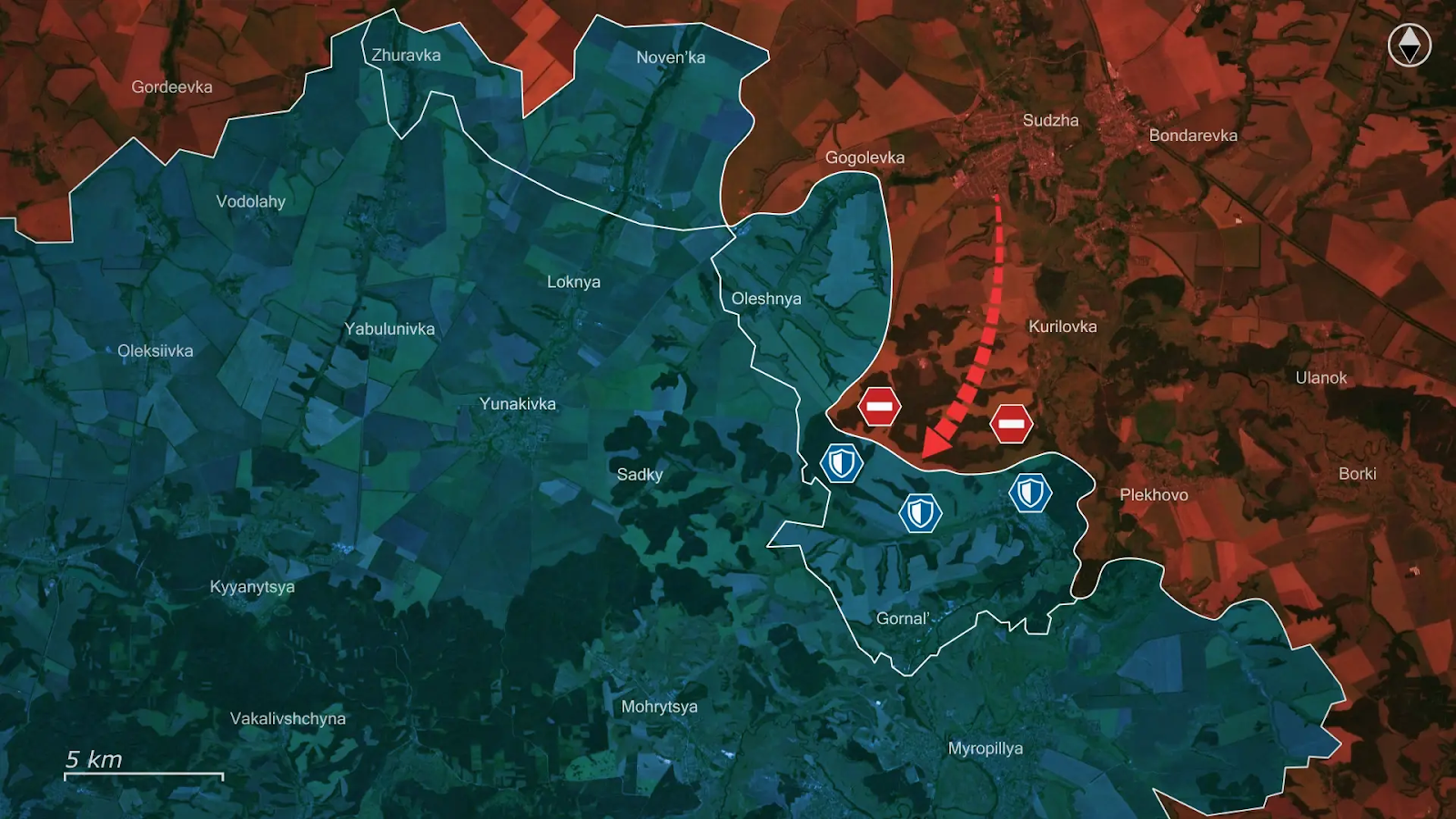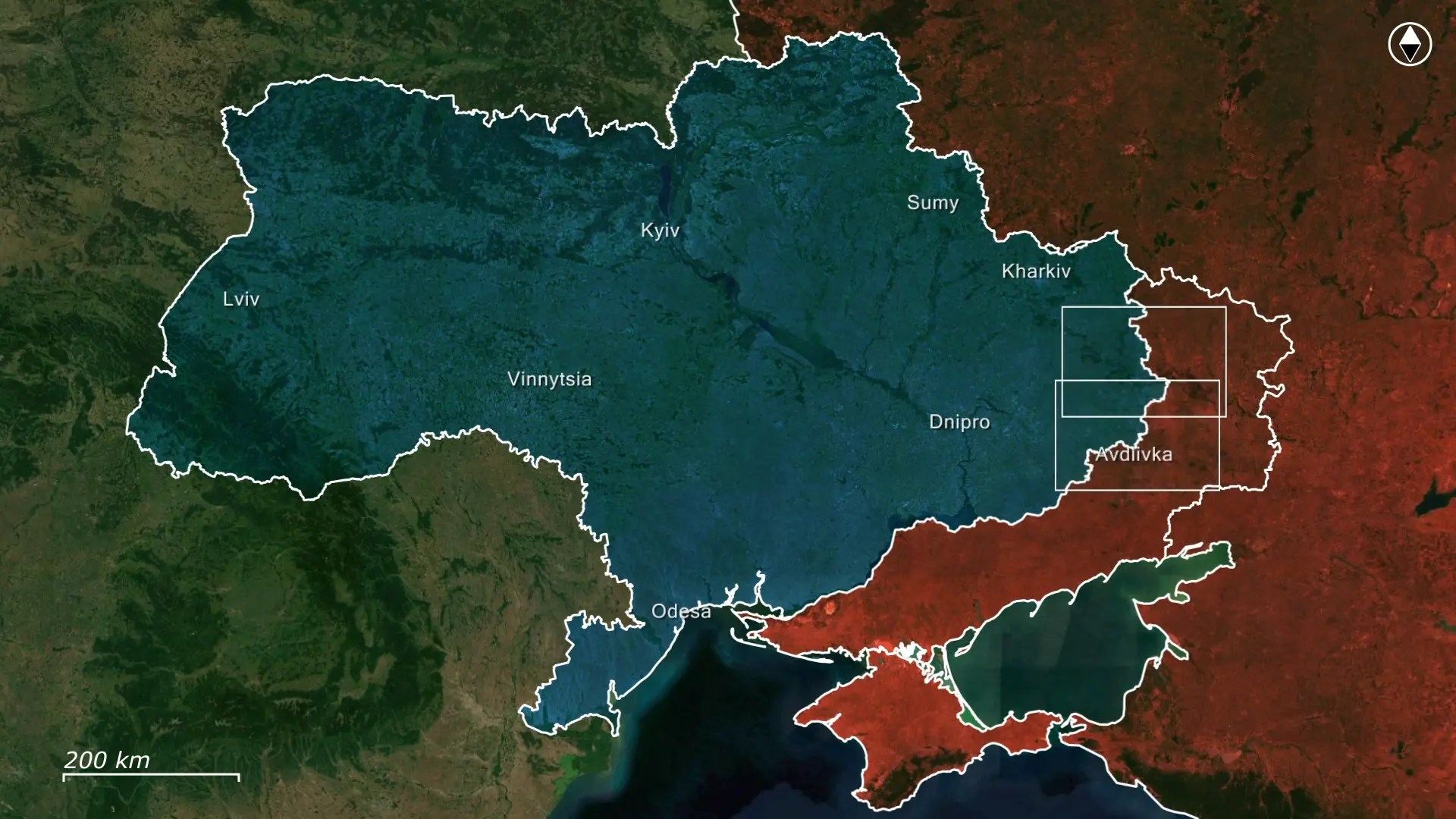Today, the biggest news comes from the Kursk direction.
Here, Russians are desperately trying to break into Sumy Oblast and carve out a buffer zone, but are instead walking straight into a Ukrainian trap. Nightly ambushes destroyed Russian assaults before they could even begin, while unsuspecting Russian infantry was funneled into deadly kill zones.

In the short term, the main Russian goal is to push Ukrainians fully out of Kursk and into Sumy Oblast. Russians plan to advance deeper into Sumy and create a large buffer zone in Ukrainian territory. By creating a buffer zone, they hope to prevent another Ukrainian cross-border incursion, as the main Ukrainian force that withdrew from Kursk remains strongly operational still.

In the long term, according to the Institute for the Study of War, Russia plans to use a buffer zone as a staging ground for a future offensive into Sumy Oblast, potentially bringing the city of Sumy within artillery range. Similar to how Ukrainians planned to use Kursk as leverage to trade for Russian-controlled Ukrainian territories, Russia hopes to use gains in Sumy to pressure Ukraine into ceding eastern territories instead, or expand its own territorial claims to include Sumy as well.

To combat Russian plans of creating a buffer zone, Ukrainians are using a flexible, multi-layered defense in the forests near Guyevo. To prevent the frontal defenses from collapsing under constant pressure and incurring significant losses, Ukrainians are allowing some Russian assaults to pass through, luring them into brutal ambushes, as they are cleaned up by Ukrainians manning the defenses in the rear.

One of the most prominent ways Ukrainians do this is through strategically placed minefields, using various tactics and techniques to stop different types of Russian advances.
During armored assaults, to reduce losses to Ukrainian drone strikes, Russians are mounting anti-drone grills and onboard electronic warfare to their vehicles, and only advance under fog or low visibility weather conditions. In response, to not waste FPV’s, Ukrainians use drones to drop landmines onto key roads at night.


This way, Ukrainians don’t need drone strikes to eliminate Russian armored assaults. During the day, when Ukrainian drone operators survey the area, they are equipped with drone-dropped grenades to finish off all the disabled vehicles that drove into the minefield, which suddenly appeared overnight.


The next major Russian assault tactic is to use pure-infantry assault groups to infiltrate Ukrainian lines, or get as close as possible to Ukrainian positions before storming their trenches. To delay their detection for as long as possible, Russians sneak through tree lines and terrain features such as dried river beds or gullies. Recognizing this, Ukrainian paratroopers laid out antipersonnel minefields along these exact locations, knowing that Russians would walk right into them during their infiltration assaults. Geolocated footage shows one Russian assault group not moving in a tactical formation, and as a result, three soldiers in the front stepped on landmines almost simultaneously, as the rest of the group froze, unable to do anything to help, or risk stepping on a mine themselves.


However, a flexible defense does not mean that Ukrainians are just letting all enemy assault groups move freely into their back line, regardless of whether they get ambushed and destroyed or not. POV footage from Ukrainian soldiers fighting at Guyevo shows them in intense nightly firefights with Russian forces on the front line. The footage shows the Ukrainian fighters from the 225th separate assault regiment using infrared lasers to point out and target the Russian soldiers, lasers that are only visible to the Ukrainians because of their night vision goggles.

Overall, Ukrainians are successfully holding a flexible defense in Kursk to block any Russian attempt to create a buffer zone into Sumy Oblast. The earlier coordinated withdrawal allowed Ukrainians to set up a flexible and multilayered line of defense, exploiting predictable Russian attack vectors in ambushes and surprise minefields throughout the forests. Thanks to superior coordination, even when Russians breach the first line, the rear defenses can quickly destroy the advance.

If the success of the Ukrainian defense continues, Russia’s advances can be stalled here indefinitely, preventing another deep push into Ukrainian territory.









.jpg)








Comments